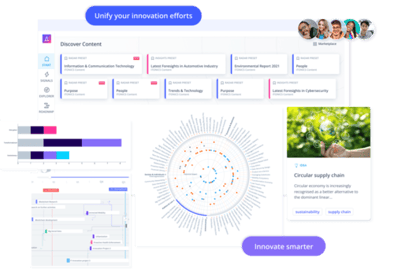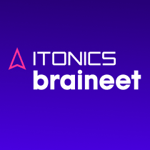Innovating business models is tough. It involves crafting and aligning the key components of a business, all while facing the uncertainty of whether the assumptions made will hold true when introduced to the market.
Navigating business model innovation becomes even more challenging due to the inherent need for trust. Upfront investments must be made without clear return promises, potentially disrupting current business operations. To bolster trust throughout the innovation process, a systematic approach is essential. This process establishes transparency, outlining the steps required to validate business model assumptions and justify investments.
To effectively manage business model innovation, organizations often categorize initiatives into core, adjacent, and beyond core innovation, following the 3-horizon innovation model. The farther from the core, the greater the uncertainty and risk associated with innovation efforts. Consequently, the anticipated value contribution becomes less clear as ventures move further away from the core.
That is why, organizations such as Bosch use different governance structures to organize business model innovation. Yet, it is also possible to use a more decentralized structure and make innovation along the three horizons the mandate of each core business function directly as Maria Mileder from PayPal explains.
The 3-horizon innovation model differentiates between improvement projects for the core business model, expansion options, and radical innovation projects that add or create new business models. The best innovators find a fine balance between these three horizons that match their corporate ambition and industry clock speeds.
 The categorization of business model innovation into three levels is essential as it demands varying levels of attention and resource allocation. The greater a company's ambition and anticipation of disruption, the more imperative it becomes to explore and invest in business models that diverge from the core. Consequently, the market and technology knowledge surrounding these horizon 2 or 3 business models is often limited, necessitating more time and resources for exploration and validation.
The categorization of business model innovation into three levels is essential as it demands varying levels of attention and resource allocation. The greater a company's ambition and anticipation of disruption, the more imperative it becomes to explore and invest in business models that diverge from the core. Consequently, the market and technology knowledge surrounding these horizon 2 or 3 business models is often limited, necessitating more time and resources for exploration and validation.
What to innovate within a business model
Companies typically pursue business model innovation to expand or enhance their market presence, driven by internal ambitions. External pressures such as shifts in the market, technological advancements, competitive forces, regulatory updates, and economic downturns also necessitate reevaluation and innovation of business models.
Business model innovation involves modifying one or several aspects of an existing model or developing an entirely new one. This includes changes in how value is created, delivered, and captured, as well as revenue generation strategies. Essentially, it involves redefining the target audience, adjusting how the company meets their needs, and potentially altering the operational approach—for example, shifting from manufacturing to partnering, or changing the revenue collection method from direct sales to leasing or licensing. Our Business Model Template clarifies the dimensions of a business model and shows the areas of business model innovation.

Regarding the three innovation horizon model, improving the core business model means refining only some of the parts of the existing business models. Within Horizon 1, typical business model innovation strategies include augmentation, which involves enhancing a single component to increase its value contribution, exclusion, which entails removing unnecessary parts of the existing business model to enhance efficiency, and substitution, which involves replacing a business model component with a more efficient alternative.
Within Horizon 2, these business model innovation strategies are also employed, but with the additional strategy of elevating. Elevating involves leveraging a particular aspect of the business model and expanding it into a standalone core element or business model.
In contrast, business model innovation in Horizon 3 means the creation or addition of a completely new business model which is why porting or integrating are the most found business model innovation strategies in this horizon. For instance, this can happen by acquiring other companies and integrating their new business model into the organization.
Independent of the need to acquire new knowledge on markets, technologies, or solutions, the process steps along all three innovation horizons are similar. Organizations first need to identify their need and define their scope for business model innovation. Then, they can plan their resources efficiently and organize their teams to engage in Horizon 1, 2, or 3 business model innovation. Once clarified, they need to identify the options to innovate in a second step. This requires careful environmental scanning - along different dimensions and is dependent on their Horizon 1, 2, or 3 innovation scope. By having different options identified, they can engage in validation activities to grow confidence that there is demand (step 3), willingness-to-pay (step 4), and feasibility (step 5). Drawing upon all validated knowledge, the sixth step entails planning and executing the integration and operation of the new business model element.
Step 1: Identifying the scope for business model innovation
Determining the appropriate scope for business model innovation marks the initial step, as it dictates the resources and level of engagement required for the process. The more ambitious a company is and the higher the level of industry speed and disruption, the less likely is that only small improvements in the business model will help to earn the aspired revenue, profit, and market position.
In contrast, if the ambition is to sustain the current core business model and no major disruption is expected soon, any investment in horizon 2 or 3 business model innovation might be an unnecessary investment as the company will not further invest in it.
As a consequence, leaders are asked to formulate their ambitions clearly and teams need to have a good understanding of the industry dynamics. This will further impact the environmental scanning and scouting approach for finding business model improvement, expansion, and new business model ideas.
To identify your needed innovation mode, we have created a quiz that will help you find your mode and, subsequently, organize your teams in the best way. As you move further from the core and require more new knowledge, it becomes increasingly beneficial to establish dedicated teams to handle Horizon 2 and Horizon 3 innovation endeavors.
A typical split of resources is the 70-20-10 split. 70 percent of resources are used to improve the core business, 20 percent are used to expand beyond the core, and 10 percent are used to explore and validate completely new business models. However, the best resource split depends - as mentioned - on your ambition and the industry clockspeed. If it is changing faster or you want to grow faster, you will need to invest more in horizon 2 and 3 innovation and less in business core and incremental innovation.
Step 2: Identifying business model innovation options
Once the scope is set, it is important to identify the business model innovation options.
For Horizon 1 innovation, the most common intake channels are addressing direct customer feedback or leveraging newer, emerging technologies. The ITONICS Innovation OS provides you with a flexible-to-configure option to process customer feedback systematically. The backbone of the ITONICS Innovation OS lies in its templates, offering structured formats to capture pertinent information, evaluation criteria to pinpoint valuable feedback, and the capability to link feedback with product development projects or initiatives.

This structured format also facilitates the creation of feedback boards, ensuring the systematic tracking and management of each feedback received.
To identify innovation opportunities beyond your customer base and engage in technology scouting, the ITONICS Innovation OS offers the Insights feature.
Insights processes millions of documents daily from various sources, such as news articles, patents, and scientific papers, and aligns them with specific technology fields. It utilizes an advanced machine learning algorithm that not only comprehends the content within these documents but also groups together documents with similar meanings. It assesses each group based on a multi-factor relevance score and monitors these groups' evolution over time. When there is a notable increase in activity or interest in a group (termed a "key event"), the system promptly alerts users and offers an automated summary of the principal updates, including citations from the original materials. This functionality enables our software to perform scouting operations that are both wider and deeper than what human analysts can provide, offering real-time insights that greatly enhance decision-making and position businesses at the cutting edge of technological advancement.
This feature enables you to effortlessly and promptly explore emerging technological developments. From there, you can delve deeper into these insights and evaluate their potential within your specific context.
Step 3: Validating the desirability
After identifying your business model innovation options, prioritizing the right opportunities becomes essential to optimize resource allocation and focus on the most promising prospects.
Typically, this process to grow confidence in business model innovation ideas is a funneled process, consisting of different stages with different focus points. Splitting the process into different stages also allows metered funding, i.e., not investing a large sum of money and only experiencing the return once brought to market but investing smaller sums to validate different assumptions within different stages. Each completed stage and validated assumption thus provide the necessary confidence to either continue the investment or kill a business model innovation idea if it does not seem to be promising. It is the idea of testing and investing small and failing/killing fast - if informed by the evidence collected.
The first stage of this validation process is collecting evidence about the customer's desire. Does the idea address a big enough market problem?
To get confidence in desirability, different methods exist: expert evaluations, desk research, or user tests can be used to get more evidence on how desired and needed the idea is.
The ITONICS Innovation OS supports all three methods. Over time, the designated idea owner can enrich and refine each captured business model idea by incorporating new evidence and insights within the system.
The system also enables the collection of evaluations from different experts. The Rating criteria can be easily configured, and each business model innovation idea can be easily shared with experts for evaluation. Experts can subsequently add their ratings and specific comments. Decision-makers can later easily evaluate and compare all ratings on a Radar and make evidence-based decisions.
In the context of the three innovation horizons, evidence required for horizon 1 business model innovation primarily stems from gathered customer feedback. To easily see how customer insights relate to business model innovation ideas, the Network Graph inside the ITONICS Innovation OS allows idea owners to easily substantiate their business model innovation ideas by relating corresponding customer feedback.
Finding evidence for Horizon 2 and Horizon 3 might not directly come from collected customer feedback as these business model innovation types go beyond the core. For such endeavors, it is more important to understand trends and movements or explore unfulfilled needs. The ITONICS Innovation OS provides you with this intel by giving you the option to consume curated cross-industry trends. By anticipating future trends and emerging patterns, you'll discover opportunities to validate your assumptions regarding desirability.
Step 4: Validating the viability
Once you have collected evidence that your business model innovation is desired and will address a significant customer need, it is time to validate whether customers will also be willing to pay for it. Only if you can show the potential for returns, leaders will be willing to sponsor and fund your idea.
You need to collect evidence that the problem you solve is so pressing that customers are willing to pay for the solution or are willing to give away something else, such as their data, to third parties. As no solution is yet available and money spending is hard to project, collecting this type of evidence might be the hardest. However, a valid option is collecting the opinion of your sales and marketing team as they have their ears close to the market. They can immediately tell what will be a good selling proposition and what not.
That is why the ITONICS Innovation OS offers rich collaboration features. You can easily share your business model innovation idea with them and collect their ratings and verbal feedback. By collecting opinions and feedback from different individuals, you will get a sharper picture and more evidence of whether the business model innovation will lead to more profit.
 Only when you're confident that you're addressing a significant customer need and that the potential rewards, whether financial or promotional, justify it, should you delve into feasibility and value creation. Until then, rapid prototypes can effectively showcase and validate your idea.
Only when you're confident that you're addressing a significant customer need and that the potential rewards, whether financial or promotional, justify it, should you delve into feasibility and value creation. Until then, rapid prototypes can effectively showcase and validate your idea.
Step 5: Validating the feasibility
As you have already engaged with your sales and marketing team on the commercial perspective of your business model innovation idea, it is now time to include your technical colleagues or partner network.
Within the ITONICS Innovation OS, it is possible to easily share your business model idea with your colleagues or to use crowdsourcing to find external partners. For instance, Bosch is using ITONICS as an open innovation platform, which allows them to easily access and coordinate idea submissions for defined search fields and co-create with startups, universities, and other experts. It serves as a gateway for Bosch to receive perspectives from the outside. The ongoing initiative has yielded 1000+ submissions.
 By bridging your external gateway with your internal innovation hub, the ITONICS Innovation OS ensures that no detail is overlooked, empowering you to make informed decisions based on a comprehensive range of options.
By bridging your external gateway with your internal innovation hub, the ITONICS Innovation OS ensures that no detail is overlooked, empowering you to make informed decisions based on a comprehensive range of options.
With that evidence, you will now be in the best position to either discard your business model innovation idea as the evidence collected questioned its impact, or to plan its integration or roll-out.
Step 6: Integrating and operating the new business models
Although you have tested the desirability, validity, and feasibility of your business model innovation idea, it is yet not operated and far from its potential. You now need to plan for its integration into the existing business model or its roll-out to the market.
Both cases require careful planning and the execution of different tasks. These tasks are:
-
Adjusting or preparing your technology infrastructure: Assess whether your current infrastructure is able to handle the new business model. If not, plan to upgrade the technology infrastructure and to support increased demand and functionality. This could, for instance, include the implementation of a scalable and flexible IT system.
-
Adjusting or preparing operational processes: Review and streamline operational processes to improve efficiency and scalability. Standardize workflows and procedures to ensure consistency across the organization. Implement automation where possible to reduce manual effort and increase scalability.
-
Market entry and communication: Develop a market expansion strategy to reach new customer segments or geographic markets. Invest in marketing and sales efforts to increase brand awareness and customer acquisition. Consider strategic partnerships or alliances to access new markets or distribution channels.
-
Risk Management: Identify and mitigate potential risks associated with scaling the business. Develop contingency plans to address unforeseen challenges or disruptions. Monitor key performance indicators (KPIs) to track progress and identify areas for improvement.
-
Legal and Compliance: Ensure compliance with relevant laws and regulations in new markets or industries. Review and update legal agreements, contracts, and policies to reflect changes in the business model. Consider intellectual property protection strategies to safeguard innovations and assets.
As the task list shows, you will still need to engage different teams and experts, to help you with implementing your business model innovation idea. To guarantee timely delivery, the ITONICS Innovation OS offers you a Roadmap feature that helps you plan, map, and track all the activities. It also shows you who is responsible for what and when.
By keeping all stakeholders informed and engaged, you can ensure that you fully unlock the potential of your business model innovation.
Business model innovation steps: A summary
Business model innovation means changing at least one element of your current business logic. As this can be risky and create hesitance, it is absolutely necessary to approach business model innovation step by step and involve the right stakeholders at the right time.
The systematic process presented will guarantee this. Your task is to provide increasing evidence step by step, from one budget round to the next. This evolution in evidence will make it easier to convince budget holders and get smaller metered funding instead of large investment sums. You need to show progress in validating a market need, a solution fit, and revenue potential sequentially and reduce uncertainty, risk, and low confidence iteratively. For this, hypothesis generation and validation play a key role and will help find evidence for your initiatives.
The ITONICS Innovation OS is ideally suited to assist you across all three innovation horizons, guiding you through every task necessary to advance the most promising business model innovation ideas and bring them to fruition.

See the ITONICS Innovation OS in action











